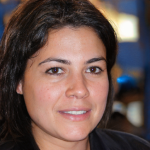In the 1960s and 70s the disability campaign mobilized itself. During this time, the civil rights movement, which included the women’s rights movement, the anti-racist movement and the gay movement, was the catalyst for people with disabilities to place our goals within a system of human rights.
Many veterans got injured after the Vietnam War. After long periods in hospitals and rehabilitation centers, these men and women either choose to live with their families at home or move into their own housing outside of a hospital setting and regain their civilian lives. As the soldier’s physical aesthetics changed, the men who returned to America soon discovered what generations of people with disabilities had been living with.
The realization was they weren’t seen as part of American society anymore. Ambitions and expectations were now limited, as freedom to experience the American dream was designed for people with no disabilities. Bravery medals were useless when one could not be part of one’s own life. The realization that a wounded soldier had a multitude of blocks to live alone became the catalyst for people with disabilities to come together and work out a plan.
The idea was to support one another while living close to one another but not in a ghetto-type arrangement. Instead, they wanted to transfer their interest in the hospital to their own societies. Because they were disabled and were coping with disabilities now, they did not need medical support, but practical day-to-day support instead.
They fought hard for exclusive home-care packages with the American government. This means the budget, which kept them in hospital and rehabilitation, could be used in the home to provide support for personal care.
Not only did the veterans move into their own homes, but many of them now wanted to go back to college or find work. The personal care service needed to be developed so that it could be more than just feeding, washing and showering, not just care support in living arrangements for people.
The plan could be individually tailored and would include duties such as driving or assisting some in a college or work environment. Essentially, this personal care service was about taking charge of their own life for the disabled person. It was also a career opportunity for many people who didn’t really want to work in a medical setting but who wanted to support people with disabilities in the community.





